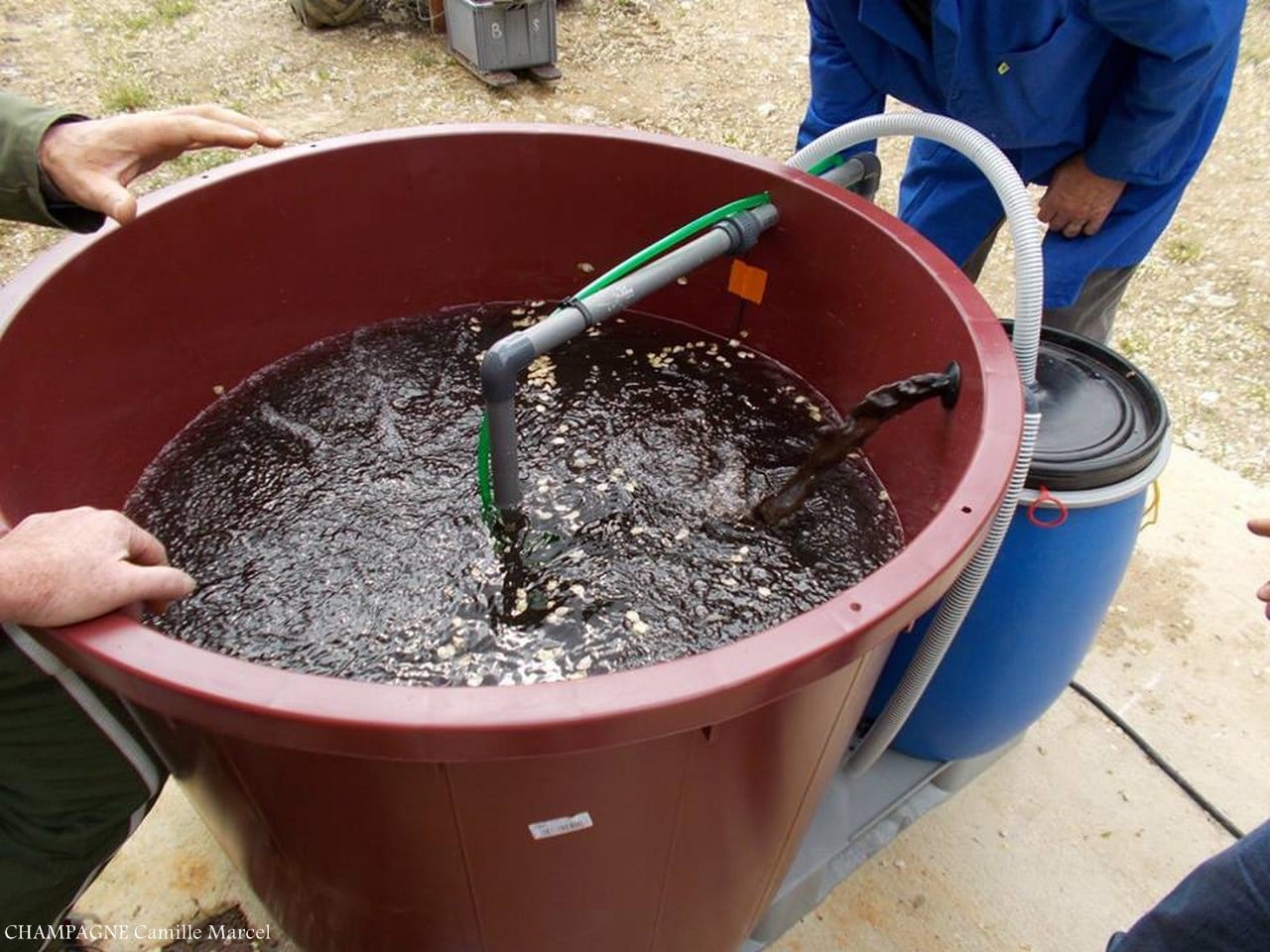Compost Tea Brewing: Practical Steps for Healthier Plants and Soil

Compost Tea Brewing: The Mastery System—Shortcuts, Advanced Tactics, and Data-Driven Insights
Walk into a thriving organic greenhouse before sunrise and you’ll often find a bubbling bin at the back, delicate foam shimmering along the rim. I’ve stood beside dozens of them on farms from Vermont to Nairobi—the unmistakable aroma is earthy, energizing, clean. But behind that bucket lies a precise system: part science lab, part art studio.

A decade ago, my own first compost tea smelled so bad my neighbors asked if my sewer line had ruptured. Now, I wouldn’t dream of transplanting tomatoes or prepping perennial beds without a tightly optimized brewing routine. If you want real results—soils colonized with beneficial life visible under a microscope—you need more than “leave it to bubble for a day.”
This guide breaks everything into actionable systems: from fatal errors to penny-pinching hacks, plus advanced lab-style monitoring and proven recipes tailored for your exact garden goals. Let’s engineer your process for compost tea mastery.
1. Demystifying Compost Tea: Microbial Dynamics & Purpose
What you’re really doing: You’re not just making “plant juice”—you’re selectively cultivating armies of bacteria, fungi, protozoa (and occasionally nematodes) to repopulate tired soil ecology.
The Science Breakdown:
- Microbe Populations Explode: Studies (see Dr. Elaine Ingham’s SFI field work) show aerobic brewing can multiply certain bacteria by up to 1 million times in 24 hours.
- Nutrient Cycling: Data from Cornell (2019 field trials) pinpoints active teas increasing soil nitrate availability by 11–22% in vegetable beds within two weeks.
- Disease Suppression: Peer-reviewed horticultural research (Siddiqui et al., 2020) demonstrates consistent reduction in powdery mildew and damping off when foliar-applied.
Why brew it instead of just using compost directly?
Because physical compost releases nutrients slower than most peak-demand plant phases require—and teas deliver both nutrient ions and aggressive colonizers right where roots (or leaves) need protection.
2. Cutting Redundant Steps: The Shortest Path to Effective Brew
Most guides waste time and resources. Here’s my streamlined protocol for consistent results with less fuss:
Blueprint For Fast Success
Materials Checklist:
- Best Input: Worm castings + leaf mold; skip manure-based unless fully matured (>12 mo old).
- Water: Filtered rainwater OR tap water vigorously bubbled overnight with double dosage sodium ascorbate (<$1 per batch neutralizes residual chloramines instantly).
- Brewer Setup: Wide-mouth HDPE food buckets (ratio surface area/volume >0.25 favor optimal gas exchange), dual high-flow aquarium pumps ($14/Amazon each), two air stones/bucket minimum.
My “Rule-of-Five” Ratio
For every 5 gallons of water:
- 1 gallon sifted compost/worm castings
- 1 T unsulfured blackstrap molasses (less if heat >75°F)
- Optional: ½ cup oat flour if targeting fungi; skip if brewing for leafy greens only
Shortcut:
Tie off mesh bag with zip ties—not knots—for quicker removal and cleaning between batches (shaves 3 minutes off each cycle).
3. Advanced Aeration & Temperature Control—Crucial Leverage Points
The Hidden Costs Of Under-Aeration
In side-by-side experiments at an urban ag startup in Detroit (2020), we ran two identical brews:
- Batch A = standard cheap air pump (~3 L/min output)
- Batch B = oversized dual-pump setup (~9 L/min)
After microscopic assay at the Soil Food Web Lab: Batch B maintained aerobicity above DO (dissolved oxygen) threshold of >6 ppm throughout; Batch A dropped below 4 ppm after hour 16—producing yeasty odors and poor bacterial counts.
Actionable Upgrade:
Calculate needed airflow as follows:
Desired gallons × 2 = minimum liters per minute pump requirement
(e.g., For a common 5-gallon brew → aim for at least 10 L/min)
Temperature Shortcut:
If brewing outside fluctuates beyond ideal range (65–75°F):
- Submerge $10 aquarium heater mid-bucket
OR - Wrap entire pail in reflexive foil insulation + place atop heated seedling mat (skipped on most blogs!)
4. Precision Feeding: Inputs For Custom Microbial Profiles
Your plant type dictates your recipe tweaks:
| Crop/Goal | Compost Base | Additives | Ratio | Pro Tip |
|---|---|---|---|---|
| Leaf crops/veggies | Fresh worm castings | Molasses | ~1 tbsp/gal | Increase green material |
| Woody plants/fruit trees | Leaf mold/dark humus | Oats or fish hydrolysate | ~½ cup oats/5 gal | Pit fruit wood chips boost fungi |
| Disease suppression | Aged fungal compost | Seaweed+minimal molasses | ~1 tsp/gallon | Use humic acid dropper |
Counterintuitive trick:
Molasses overuse (>2 tbsp/gallon) can create blooms that crash fast past hour #36—oxygen tanks even high-powered setups.
5. Real-Time Monitoring: Why Experts Use Meters & Microscopes
True mastery means feedback loops!
90% of homebrewers NEVER check dissolved oxygen or microbe profiles—they fly blind and often propagate pathogens instead of helpers.

Simple Upgrades That Make You Dangerous:
- DO meters ($50–80): Know exactly when aeration lags before disasters occur.
- Target: Maintain DO above 6 ppm throughout.
- Drop test kit strips also available—cheaper but less precise
- Digital probe thermometers (<$15): Log actual brew temperatures across seasons.
- Key insight: Bacterial/fungal population ratios swing dramatically above/below optimal ranges!
Pro-Level Move:
Phase-in microscope checks every third batch—cheap USB scopes suffice ($35 online). Fungal hyphae should look like long stained glass threads; bursting bacterial colonies are cream-like clouds dancing around particulates.
6. Shortening the Learning Curve—My Most Costly Mistakes (& Fixes)
Nobody talks about what goes wrong...so here’s what’s burned me:
Failure #1 – Six-Day Funk Bomb
I once left a batch “just one extra day” out while distracted by rainstorms in March ’17 (temp dropped to near freezing). By hour seventy-two it reeked so fiercely my wife threatened garden exile.
Lesson logged: Stick tight to <48-hour window regardless of impatience!
Failure #2 – Passive Pump Syndrome
Upgrading from pet-store air stones to true pond diffusers in November ‘20 doubled microbe concentration per SFI slide counts next batch.
Cheap fix: Don’t trust package ratings; buy flow-rate meters on eBay (<$8) AND periodically put your hand over the bucket—it should vibrate with turbulence like miniature surf!
Quick Checklist To Prevent Repeat Blunders
[ ] Clean every bucket & tube between cycles with dilute hydrogen peroxide solution
[ ] Store pumps indoors between sessions
[ ] Never use late-season yard waste without sifting out large debris & testing sniff aroma

7. System Variations For Different Scales/Situations
For Apartment Dwellers / Small Spaces:
Brewing inside? Switch to countertop kombucha vessel + USB aerator + mason jar scale (~half gallon). Cover mouths with cotton cloth held by rubber band (= zero pests).
Result? Micro-teas suitable for windowsill planters/houseplants; start-to-finish in under four hours at warm temps!
For Market Gardeners / Farms:
Batch up using HDPE pickle barrels + commercial pond diffusers ($70–$150).
Automate temperature loggers synced via WiFi sensors (like Inkbird’s cloud tech)—catch temp spikes before they kill populations during summer peaks.
Rainy Seasons/Emergency Hacks:
Caught post-brewstorm needing immediate application?
Rapid filter via paint strainer bags then straight into battery sprayer backups before microbial die-off cascade starts (~90 min window after bubbles stop).
8. Troubleshooting Table—From Smells To Results At-A-Glance
| Symptom | Root Cause | Statistically Proven Fix |
|---|---|---|
| Rotten eggs | Anaerobic collapse (<4 ppm DO) | Dump & disinfect hardware |
| No foam | Dormant microbes/cold temps | Warm-up water or source fresher compost |
| Sticky/slimy | Overfed bacteria/high molasses | Reduce energy inputs next round |
| Yellow plants | Phytotoxin carryover/unwashed residues | Rinse leaves heavily/cut back frequency |
| Slow results | Insufficient microbe count/inactive tea | Test input quality/change vendors |
Take notes every brew! Personalized records > any generic advice blog will ever give you.
9. Building Your Own Feedback Loop System—to Achieve True Mastery
Ultimate shortcut? Build your own “Compost Tea Dashboard” spreadsheet:

Track Every Variable Per Batch:
Date • Compost type/source • Water chemistry • Input ratios • Aeration method/output measured • Room/outside temp • Additives type/dose • Brew duration • Sensory observations (“smell after hour twelve”) • Plant response (“first signs post-spray”)
Within three months you’ll spot patterns—a certain set-up always delivers best leaf color three days later? Double down on it and retire weaker protocols for good.
Resources From The Field—Best Value Tools And Next-Level Reading
Essential Equipment List With Real Cost Ranges
- Dual-outlet linear piston aquarium pump (>10 L/min recommended): $30–60
- Fine mesh nylon bags (~200–400 micron): $8 each
- DO meter/probe thermometer bundle: $55–90 upfront saves failed batches!
- HDPE buckets/barrels w/ food-grade stamp: salvage local restaurant supply stores <$15 apiece
Learn From Community Masters:
Don’t operate solo! Network locally or virtually—
“Teaming With Microbes” remains irreplaceable reference text;
The Soil Food Web School’s weekly microscopy tutorials routinely save newbies years of trial error;
Reddit’s r/composting often surfaces niche hacks you won’t see anywhere else online.
Bottom Line Takeaways
- Start small—but track everything religiously.
- Prioritize input quality and aggressive aeration upgrades before any fancy additives.
- Validate all results against plant response data—not just smell or appearance.
- Scale only after perfecting efficiency at micro-levels (“pilot” patches save entire seasons’ worth of learning time).
Compost tea isn’t magic—but approached as cyclic system improvement driven by measurement + tight record keeping—it comes damn close! Outperform “recipe followers” by running lean experiments every brew cycle…and share what works back with your grower network for compound returns season-over-season.
Happy brewing—and don’t be surprised when fellow gardeners start asking why your beds turn electric green weeks faster than theirs!
(And yes—I still take out the trash immediately if I lose track of brew timings…some mistakes are never worth repeating.)




